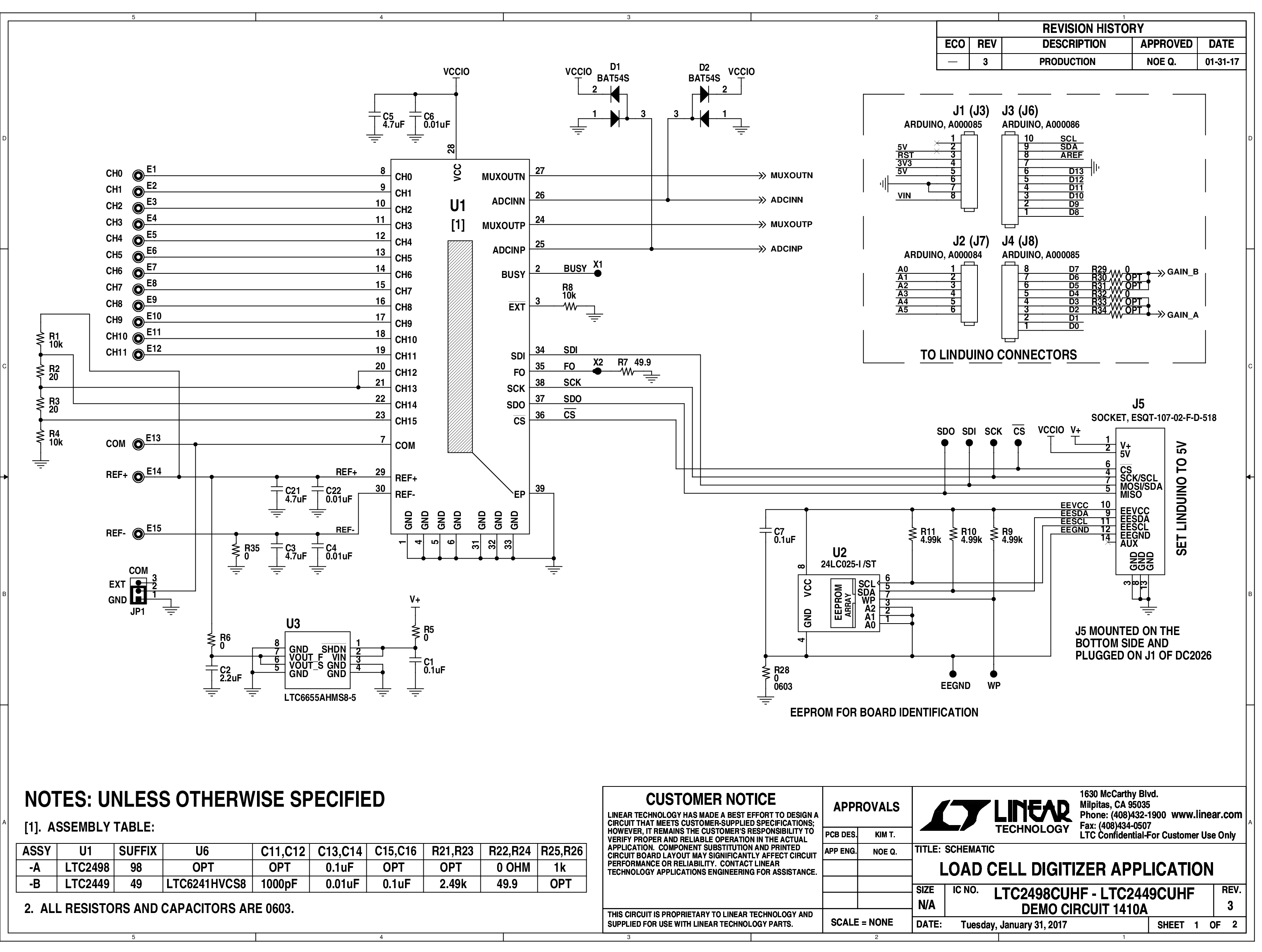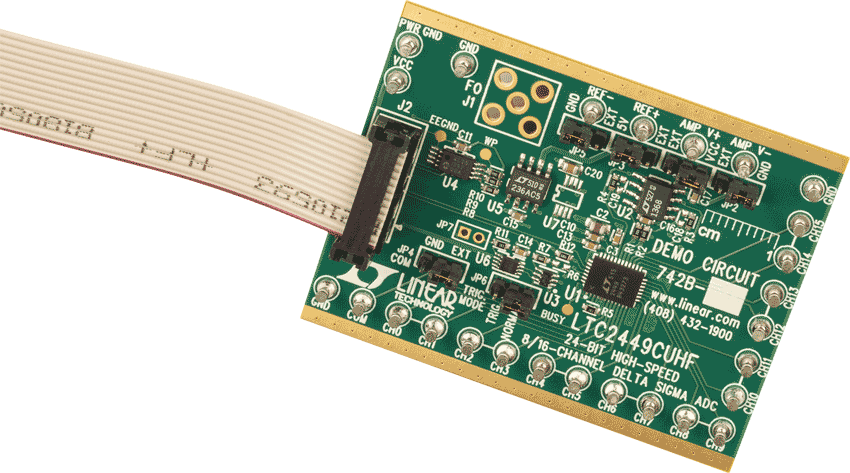LTC2449
PRODUCTION24-Bit High Speed 8-/16-Channel ∆∑ ADCs with Selectable Speed/Resolution
- Part Models
- 4
- 1ku List Price
- Starting From $9.39
Part Details
- Up to 8 Differential or 16 Single-Ended Input Channels
- Up to 8kHz Output Rate
- Up to 4kHz Multiplexing Rate
- Selectable Speed/Resolution
- 2µVRMS Noise at 1.76kHz Output Rate
- 200nVRMS Noise at 13.8Hz Output Rate with Simultaneous 50/60Hz Rejection
- Guaranteed Modulator Stability and Lock-Up Immunity for any Input and Reference Conditions
- 0.0005% INL, No Missing Codes
- Autosleep Enables 20µA Operation at 6.9Hz
- <5µV Offset (4.5V < VCC < 5.5V, –40°C to 85°C)
- Differential Input and Differential Reference with GND to VCC Common Mode Range
- No Latency Mode, Each Conversion is Accurate Even After a New Channel is Selected
- Internal Oscillator-No External Components
- LTC2445/LTC2449 Include MUXOUT/ADCIN for External Buffering or Gain
- Tiny QFN 5mm x 7mm Package
The LTC2444/LTC2445/LTC2448/LTC2449 are 8-/16- channel (4-/8-differential) high speed 24-bit No Latency ∆∑ ADCs. They use a proprietary delta-sigma architecture enabling variable speed/resolution. Through a simple 4-wire serial interface, ten speed/resolution combinations 6.9Hz/280nVRMS to 3.5kHz/25µVRMS (4kHz with external oscillator) can be selected with no latency between conversion results or shift in DC accuracy (offset, full-scale, linearity, drift). Additionally, a 2X speed mode can be selected enabling output rates up to 7kHz (8kHz if an external oscillator is used) with one cycle latency.
Any combination of single-ended or differential inputs can be selected with a common mode input range from ground to VCC, independent of VREF. While operating in the 1X speed mode the first conversion following a new speed, resolution, or channel selection is valid. Since there is no settling time between conversions, all 8 differential channels can be scanned at a rate of 500Hz. At the conclusion of each conversion, the converter is internally reset eliminating any memory effects between successive conversions and assuring stability of the high order delta-sigma modulator.
Applications
- High Speed Multiplexing
- Weight Scales
- Auto Ranging 6-Digit DVMs
- Direct Temperature Measurement
- High Speed Data Acquisition
Documentation
Data Sheet 1
Reliability Data 1
User Guide 2
Design Note 1
Technical Articles 1
Product Selector Card 2
ADI has always placed the highest emphasis on delivering products that meet the maximum levels of quality and reliability. We achieve this by incorporating quality and reliability checks in every scope of product and process design, and in the manufacturing process as well. "Zero defects" for shipped products is always our goal. View our quality and reliability program and certifications for more information.
| Part Model | Pin/Package Drawing | Documentation | CAD Symbols, Footprints, and 3D Models |
|---|---|---|---|
| LTC2449CUHF#PBF | 38-Lead QFN (5mm x 7mm w/ EP) | ||
| LTC2449CUHF#TRPBF | 38-Lead QFN (5mm x 7mm w/ EP) | ||
| LTC2449IUHF#PBF | 38-Lead QFN (5mm x 7mm w/ EP) | ||
| LTC2449IUHF#TRPBF | 38-Lead QFN (5mm x 7mm w/ EP) |
This is the most up-to-date revision of the Data Sheet.
Software Resources
Can't find the software or driver you need?
Request a Driver/SoftwareHardware Ecosystem
| Parts | Product Life Cycle | Description |
|---|---|---|
| I²C Isolators 1 | ||
| LTM2883 | PRODUCTION | SPI/Digital or I2C μModule Isolator with Adjustable ±12.5V and 5V Regulated Power |
| Low Input Bias Current Op Amps (≤100 pA) 1 | ||
| LTC6241 | PRODUCTION | Dual 18MHz, Low Noise, Rail-to-Rail Output, CMOS Op Amp |
| Precision Resistor Network 1 | ||
| LT5400 | RECOMMENDED FOR NEW DESIGNS | Quad Matched Resistor Network |
| TimerBlox 1 | ||
| LTC6991 | PRODUCTION | TimerBlox: Resettable, Low Frequency Oscillator |
Tools & Simulations
Linduino 4
Linduino is Analog Devices’ Arduino compatible system for developing and distributing firmware libraries and example code for our integrated circuits. Each Linduino-supported product includes an example main program, defined in the LTSketchbook/Part Number folder and driver code, defined in the LTSketchbook/libraries folder.
Linduino code repository on GitHub and instructions on how to use the code.






